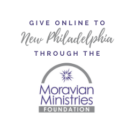4th in a Series on the Word of God
1 Blessed is the man that walketh not in the counsel of the ungodly, nor standeth in the way of sinners, nor sitteth in the seat of the scornful. 2 But his delight is in the law of the LORD; and in his law doth he meditate day and night. 3 And he shall be like a tree planted by the rivers of water, that bringeth forth his fruit in his season; his leaf also shall not wither; and whatsoever he doeth shall prosper. Psalm 1:1-3
Thy word (O, LORD) is a lamp unto my feet, and a light unto my path. Psalm 119:105
16 And he came to Nazareth, where he had been brought up; and he went to the synagogue, as his custom was, on the sabbath day. And he stood up to read; 17 and there was given to him the book of the prophet Isaiah. He opened the book and found the place where it was written, 18 “The Spirit of the Lord is upon me, because he has anointed me to preach good news to the poor. He has sent me to proclaim release to the captives and recovering of sight to the blind, to set at liberty those who are oppressed, 19 to proclaim the acceptable year of the Lord.” 20 And he closed the book, and gave it back to the attendant, and sat down; and the eyes of all in the synagogue were fixed on him. 21 And he began to say to them, “Today this scripture has been fulfilled in your hearing.”
Luke 4:16-2115 And count the forbearance of our Lord as salvation. So also our beloved brother Paul wrote to you according to the wisdom given him, 16 speaking of this as he does in all his letters. There are some things in them hard to understand, which the ignorant and unstable twist to their own destruction, as they do the other scriptures. 2nd Peter 3:15-16
15 Give my greetings to the brethren at La-odicea, and to Nympha and the church in her house. 16 And when this letter has been read among you, have it read also in the church of the La-odiceans; and see that you read also the letter from La-odicea. Colossians 4:15-16.
The canon (authoritative collection) of our Protestant Bible consist of 66 books, 39 in the Old Testament and 27 in the New Testament. For the next several weeks, I want to talk to you about reading the Bible. It has not always been as easy as one might hope.
First, reading the Bible was awkward. We know from Luke 4 (see above) that, at the beginning of his ministry, Jesus stood up in the synagog and read 1 verse from Isaiah. In those days, the “book” was a scroll that had to be wound using two hands. It probably took Jesus longer to find his place than to read the passage. It was a dramatic moment.
Second, reading the Bible was expensive. We know from quotes scattered throughout the epistles of Paul, that the Bible read by the first generation of Christians was the Greek translation of the Hebrew Bible known as the Septuagint. It, too, was written on a number of different scrolls. Scrolls were copied by hand, and very expensive. Most people only read the Bible, or heard it read, when they gathered for worship.
Third, the canon evolved slowly, but surely. We know from 2nd Peter 3:16 (see above) that by the time a second or third generation of Christians came along, the epistles of Paul were revered as scripture alongside the books of the Septuagint. We know from Colossians 4 (see above) that not every church received every epistle, and that not all the epistles that were written survived. Thus the apostle writes:
“…when this letter has been read among you, have it read also in the church of the Laodiceans, and see that you read the letter from Laodicea.”
Of course, the epistle to Laodicea did not survive! Likewise, many other epistles from various authors did not make the cut to be included in our New Testament.
Now what about the gospels? We have seen already in this series that the gospels were not written down immediately after the resurrection and ascension of Jesus because the church thought Jesus was coming back right away. (This has great evidential value!) Then, as the apostles and the first generation of witnesses started to die out, people asked for a written record of what Jesus said and did. We know from internal evidence, that Mark was written down just before the fall of Jerusalem in A.D. 70. We know from internal evidence that Matthew, and Luke and John were written down after the fall of that city, undoubtedly from one to three decades after.
Thus, for a generation or more, not every church had all four of the canonical gospels. However, we can have no doubt that when the various churches learned of the existence of a new or different gospel they scrambled to get copies.
A number of gospels that were not included in our New Testament clamored for the attention of the churches, too. Among others, there were gospels claiming to be written by Thomas, and Peter, and Nicodemus. They were excluded from our New Testament for many reasons, but chiefly because they showed us a Jesus that was very different from the Jesus of Matthew, Mark, Luke and John. For instance, the Infancy Gospel of Thomas, tells a story about Jesus many wish were true. In it, the boy Jesus, age five years, dammed up a creek and fashioned 12 birds from clay he found in the creek bed. Jesus then clapped his hands, and the birds flew away. That is a beautiful story; but it is only the beginning of the story, and the end of it is not so beautiful. One of the playmates of Jesus criticized Jesus for making the birds on the Sabbath. Then he took a stick and destroyed the pool that Jesus had made. Immediately Jesus commanded him to wither away, and he did! I do not think it was hard to exclude this gospel from the canon based on content alone. It excludes itself.
Most of the 27 books of our New Testament were in wide circulation by the middle of the second Christian century. And, though it has continued to be debated across the centuries and is still debated today, the canon as we know it was first “officially” articulated by the Council of Hippo in 393 A.D. However, this does not mean that the Bible was suddenly easy to find or inexpensive to purchase.
Though the codex (leaves of text bound together like our books) had largely replaced the scroll by middle of the 5th century A.D., all books were still copied by hand, or printed from hand-carved wooden plates, and they were still very rare, and very expensive.
Fourth, there was a problem of language. For several generations, the early church spoke and read Greek, which was the language of the New Testament, and the language of the marketplace. However, as the church spread to other lands where other languages were spoken, translation often lagged behind. In the late 4th century, it was good news when St. Jerome translated the original texts of scripture into the latin of the Vulgate, but only for those who were rich and educated. It was not such good news for the average person who could not read Latin or afford to buy the Vulgate.
What it boils down to is this. For 1000 years or more, many people learned more about Jesus from religious art and from the architecture of the churches and cathedrals than they did from the Bible. Thank God, a picture is worth 1,000 words; and these decorations in the churches served as visual aids and reminders for the common people who continued to pass on to others stories about Jesus in their own language. The oral tradition of the Word of God, spoken, did not die when the Bible was written down. We still use it, today. I know, for my mother used it with me, and I used it with my own children. What did Paul say? “We are living epistles.” It is as living epistles that we tell the story of Christ, in word and in deed.
So, for at least 1,100 years, it was hard for the average person to read the Bible. I think it is interesting that this 1100 year period was bracketed by two theologians, St. Augustine of Hippo, and Luke of Prague ( a Moravian, by the way) who agreed that if a one knew the story of Jesus, and had faith, hope, and love, one could live as a Christian without the Bible. Thank-God, this was true, for living without the Bible was the only option most people had.
The Bible did not become readily available for reading until after two big developments. The first occurred in and around 1440 A.D., the invention of moveable type and the printing press by Gutenberg. The first thing that Gutenberg printed was the Vulgate Bible. The second occurred in 1517, when Luther nailed his 95 theses to the door of the church In Wittenberg and started the Protestant Reformation. Luther and those reformers who preceded and followed him, insisted that the gospel be preached and read in the language of the people. Prior to 1440 there were less than 100,000 books in Europe, by the time of Luther there were 9,000,000. Luther used the printing press like a “technological megaphone” to spread the gospel of Jesus. One of Luther’s most important’s works, was a Bible translated into his native German.
“Today, we have come a long way!” Books are everywhere. We can read a Gideon Bible for free, we can find a Bible at any yard sale for fifty-cents. In the last year I bought a leather bound Thompson Chain Reference Bible in the King James Version of the Bible for a dollar, and a leather bound copy of the Oxford Annotated Bible in the Revised Standard Version for ten dollars. What is even better, I have the English Standard Version of the Bible on my Kindle Fire, and I use the text-to-speech feature of the Kindle to listen to it as I walk. I can also search it to find texts or do word studies. Reading and studying the Bible has never been easier.
It is a shame that so people really do, but the truth is we are much more likely to read books about the Bible than to read the Bible itself. We trust Billy Graham, and Charles Stanley, and Marcus Borg, but we do not trust ourselves.
Still, from time to time, we make the effort. Every December 31st countless people sit down and make a resolution to read the Bible straight through in the new year. They start off pretty good. Though they don’t always understand it, they really like Genesis, and Exodus is not so bad, and Numbers is certainly tolerable. Then sometime around the end of February they hit Leviticus, and they get bogged down in the commandments-in-ordinances like, “You will not boil a kid in its mother’s milk,” or “You will not wear a garment made from two kinds of cloth.”
Let me be honest. I am speaking autobiographically. It takes great will power and discipline to get up at 5:30 a.m. and sit-down to plow through two or three chapters of Leviticus.
Does that mean I would toss the book of Leviticus out of the Bible? Absolutely, not. As I have said before, and as I will say again, I believe the Bible we have is the Bible God wants us to have. Not every book will appeal to every person, but every book will appeal to some people. The book of Leviticus is a trial to me (Pun intended!), but a lawyer or a judge may be fascinated by its laws, and it may be the gateway book that opens the Bible to them.
Or, what about this. That portion of Exodus that describes the construction of the tent of meeting certainly appeals to craftsmen. At my last church, I once had a skilled carpenter tell me that his favorite verse was Exodus 31:3. There-in God says to Moses:
“I have filled Be-Zal-El with the Spirit of God, with ability and intelligence, with knowledge and all craftsmanship.”
This man was old. He held out his shaky hands and said, “I can’t teach a Sunday school class. I can’t pray in public. I can’t (or won’t) serve on a board, but if you need a skilled carpenter. I am your man!” When I saw this man’s shaky hands, I had my doubts, but they were soon dispelled. This man came to a meeting of the Board of Trustees, and asked for $300. He said that he needed it to buy lumber so he could build a wind chest for a 27 rank pipe organ that he and six of his friends wanted to build for the sanctuary of the church. The board did not really understand about the organ, and they admitted as much; but they knew this man could make anything he set out to make, so they gave him the $300.
In the same way, a woman may be attracted to the story of Ester. Ester is a strange book to be in the Bible. It does not even mention God. But it is about a strong, courageous woman, and in the 21st century, it has achieved new notoriety been the gateway into the Bible for many strong and courageous women.
In the same way, those who love poetry will be attracted to the book of Ecclesiastes. Back in 1969, the Byrds based a popular song on a passage from Ecclesiastes 3. There-in we read:
For everything there is a season, and a time for every matter under heaven: a time to be born, and a time to die; a time to plant, and a time to pluck up what is planted; a time to kill, and a time to heal… (and so on and so on)
Ecclesiastes is a beautiful book, but it is hardly upbeat or edifying. The preacher of Ecclesiastes says that God has put eternity into the heart of humankind, but, still, God has made us like the animals who die. The preachers says the best thing we can do is “enjoy our work,” and “eat, and drink, and make merry,” for tomorrow we will be “on the wrong side of the grass.” (Translation my own!”
There are a number of great sermons in Ecclesiastes, but all of them need to be exposed to the light that broke from the garden tomb on that first Easter Morning when God reached down, and gave new life to Jesus who had lived with us, and died for us, and then rose again to give us a future and a hope.
Let me give you one more example. Psalm 137 appeals to those who are torn by grief and anger. The Psalmist wrote from Babylon, where he had been taken captive after the destruction of Jerusalem. He was contemplating the joys of revenge when he wrote:
O daughter of Babylon, you devastator! Happy shall he be who requites you with what you have done to us! Happy shall he be who takes your little ones and dashes them against the rock!
Does Psalm 137’s inclusion in the Bible mean that God “wants us to,” or “permits us to,” kill the children of our enemies? Can this text possibly be inspired by the same God who, in Leviticus, 20 said that any man who sacrifices his child shall be put to death by stoning?
I think not. Rather the text illustrates that no thought or action on our part is so heinous as to finally separate us from the love of God.
There are many text in scripture that give us pause. Thus, while St. Augustine maintained that the Bible was without doctrinal error, he said there were some texts that preachers definitely ought to avoid.
The problem is, today, we can’t avoid them. The Bible is too ubiquitous, too available, and from time to time we stumble on passages that are difficult if not impossible to understand.
Next week I will go into detail about my method of receiving, reading, and studying scripture, but the first rule or reading scripture will not wait. The first rule we Christians have for reading the Word of God written, is that we read it in light of the Word of God Incarnate in Jesus Christ.
This is the heritage of the Moravian Church. I was reminded of this when I was one of two Moravians representing our denomination in dialogues with the Presbyterian Church and several other reformed churches, the other being Herman Weinlick from our Northern Province. One day, a member of the committee came to the meeting with a book by Bishop Spong entitled, “The Sins of Scripture.” I knew the book. It points out all the hard text of the Bible, especially those like Psalm 137, that deal in revenge or death, or slavery. He said, “What would you Moravians say about ‘the sins of scripture?’ How would you deal with these hard texts?” Herman and I put our heads together, and immediately we reached agreement. We responded, “That is an easy one. We would simply say that there are some things in Scripture that are pre-Christ and somethings that are sub-Christ. They simply do not measure up to him.”
It is ironic, Herman and I were probably the two most conservative people in the room, but this “precious treasure” of Moravian theology gave us a leg-up on the problems and possibilities of reading Scripture in the 21st century. Moravians believe that the Bible is the Word of God written, with this proviso, it must be interpreted in light of Jesus Christ. We Moravians always read the Word of God written in light of, and by the power of the Holy Spirit, in the company of, the Word of God Incarnate, Jesus Christ. He is the Lord of this World, and the Lord of the scripture, too. He makes his presence felt on every page!
Next week (or two weeks from now) we will find out more about what that means.
Finis
Worth Green, Th.M., D.Min.







